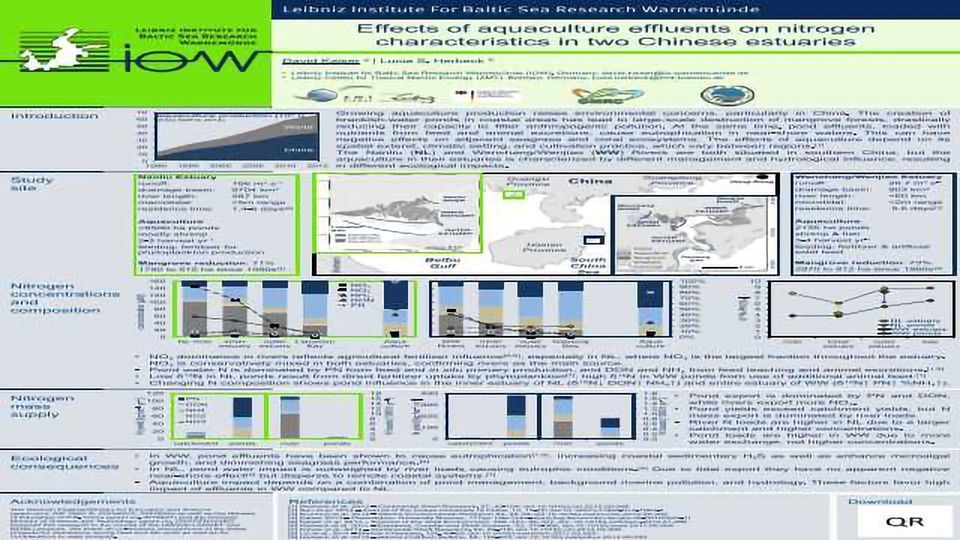Effects of aquaculture effluents on nitrogen characteristics in two Chinese estuaries

Growing aquaculture production raises environmental concerns, particularly in China. The creation of brackish-water ponds in coastal areas has lead to large-scale destruction of mangrove forests, drastically reducing their capacity to filter anthropogenic pollution. At the same time, pond effluents, loaded with nutrients from feed and animal excretions, cause eutrophication in near-shore waters. This can have negative effects on adjacent seagrass and coral ecosystems. The effects of aquaculture depend on its spatial extend, climatic setting, and cultivation practice, which vary between regions.
The Nanliu (NL) and Wenchang/Wenjiao (WW) Rivers are both situated in southern China, but the aquaculture in their estuaries is characterized by different management and hydrological influence, resulting in different ecological impacts.
Results show that effluents form ponds change estuarine nitrogen concentrations and composition in both estuaries. Concentrations of ammonium and organic nitrogen and their relative contribution to total nitrogen increase. Isotopic composition of particulate nitrogen changes in accordance with the values found in ponds of the respective site.
While aquaculture yields larger amounts of nitrogen per area than the river catchments, the larger catchment areas result in a dominance of nitrogen fluxes into coastal waters from rivers, not ponds.
The ecological effects of effluents, it is concluded, depend on a combination of pond management, background riverine pollution, and hydrology and can be very different between seemingly similar sites.
The Nanliu (NL) and Wenchang/Wenjiao (WW) Rivers are both situated in southern China, but the aquaculture in their estuaries is characterized by different management and hydrological influence, resulting in different ecological impacts.
Results show that effluents form ponds change estuarine nitrogen concentrations and composition in both estuaries. Concentrations of ammonium and organic nitrogen and their relative contribution to total nitrogen increase. Isotopic composition of particulate nitrogen changes in accordance with the values found in ponds of the respective site.
While aquaculture yields larger amounts of nitrogen per area than the river catchments, the larger catchment areas result in a dominance of nitrogen fluxes into coastal waters from rivers, not ponds.
The ecological effects of effluents, it is concluded, depend on a combination of pond management, background riverine pollution, and hydrology and can be very different between seemingly similar sites.






